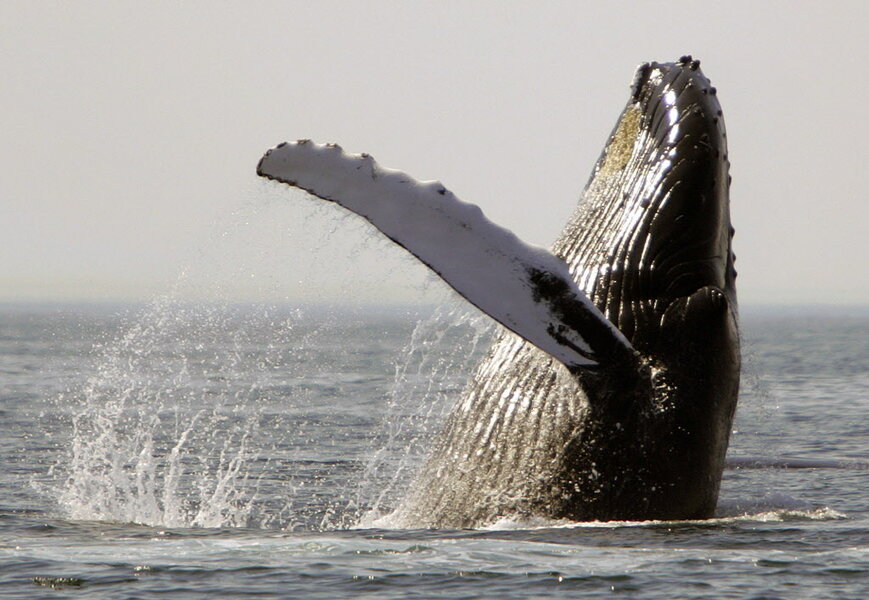Beached New Jersey humpback: What are we doing to protect whales?
Loading...
A humpback whale that washed ashore in New Jersey on Friday died because of human interaction, officials say.
The young whale, which was 33 feet long and weighed some 20 tons, may have been caught in a fishing line, officials with the Marine Mammal Stranding Center said. The resulting injuries likely left the animal unable to eat. On Saturday, a necropsy revealed that the whale was emaciated, Philadelphia’s WCAU-TV reported.
The beaching comes at a critical time for the species. Just weeks ago, nearly all humpback whale populations were removed from the endangered species list. But whales still face a myriad of human threats, and not everyone agrees with the status change. So are we doing enough to protect Earth’s largest creatures?
Generally speaking, the threats are well known: entanglement, weaponized sonar use, and ship collisions are common causes of whale fatalities. But to neutralize these threats, conservationists must either work with – or against – commercial interest groups and military organizations.
"We can make recommendations for what we think will help these whales," Bruce Mate, director of the Marine Mammal Institute at Oregon State University, told The Christian Science Monitor’s Noelle Swan in 2014. "But this is as much about political process as it is about biological process."
That said, whale conservation actually has come a long way in terms of policy. Humans have hunted whales for some 5,000 years, but the advent of factory ships made whaling a competitive industry in the 18th and 19th centuries. By the 1930s, overexploitation was so rampant that the League of Nations considered sanctions against the practice. Those measures, which took years to pass, were largely ignored.
But in the second half of the 20th century, whales became a favorite fixture in pop culture. Americans watched "Flipper" on their TV sets and visited SeaWorld on vacation, and many viewed these gentle giants with newfound admiration. Suddenly, activist groups from all over the world joined the fight against pirate whaling – and "Save the Whales" entered the global lexicon.
Since then, marine mammal conservationists have achieved a considerable number of political successes. In 1972, the United States passed the Marine Animal Protection Act – the first legislative act to call for an ecosystem approach to conservation. The Endangered Species Act was passed a year later, offering more comprehensive protections to the humpback whale and many other species. A slew of commercial whaling moratoriums emerged in the ’70s and ’80s.
Modern efforts have proven similarly effective. In January, NOAA Marine Fisheries Service designated an additional 39,414 square miles of ocean as critical habitat for the endangered right whale. In 2015, the US Navy agreed to reduce its use of mid-frequency sonar along the coasts of California and Hawaii. Active sonar devices had long been known to disrupt feeding and communication between whales, sometimes causing accidental strandings.
But in some cases, technology has proven to be a boon in whale protection. Using high-tech acoustic buoys and smartphone apps, mariners can now digitally track whales to avoid collisions. In a recent study, scientists used satellite tagging to show that even a slight adjustment in shipping lanes could reduce these collisions, which can be costly for ship owners and fatal for whales. And drones, which first entered the public consciousness as military weapons, have been used to monitor whale populations without disturbing them.
"I believe that drones for conservation and research are akin to the invention of the microscope for cellular biology," Iain Kerr, chief executive officer of the research organization Ocean Alliance, told UAS Vision. "If we truly want to understand what effects humanity is having on wildlife, we need to study them in a non-invasive manner. Today's drones are the ultimate realization of non-invasive research."








